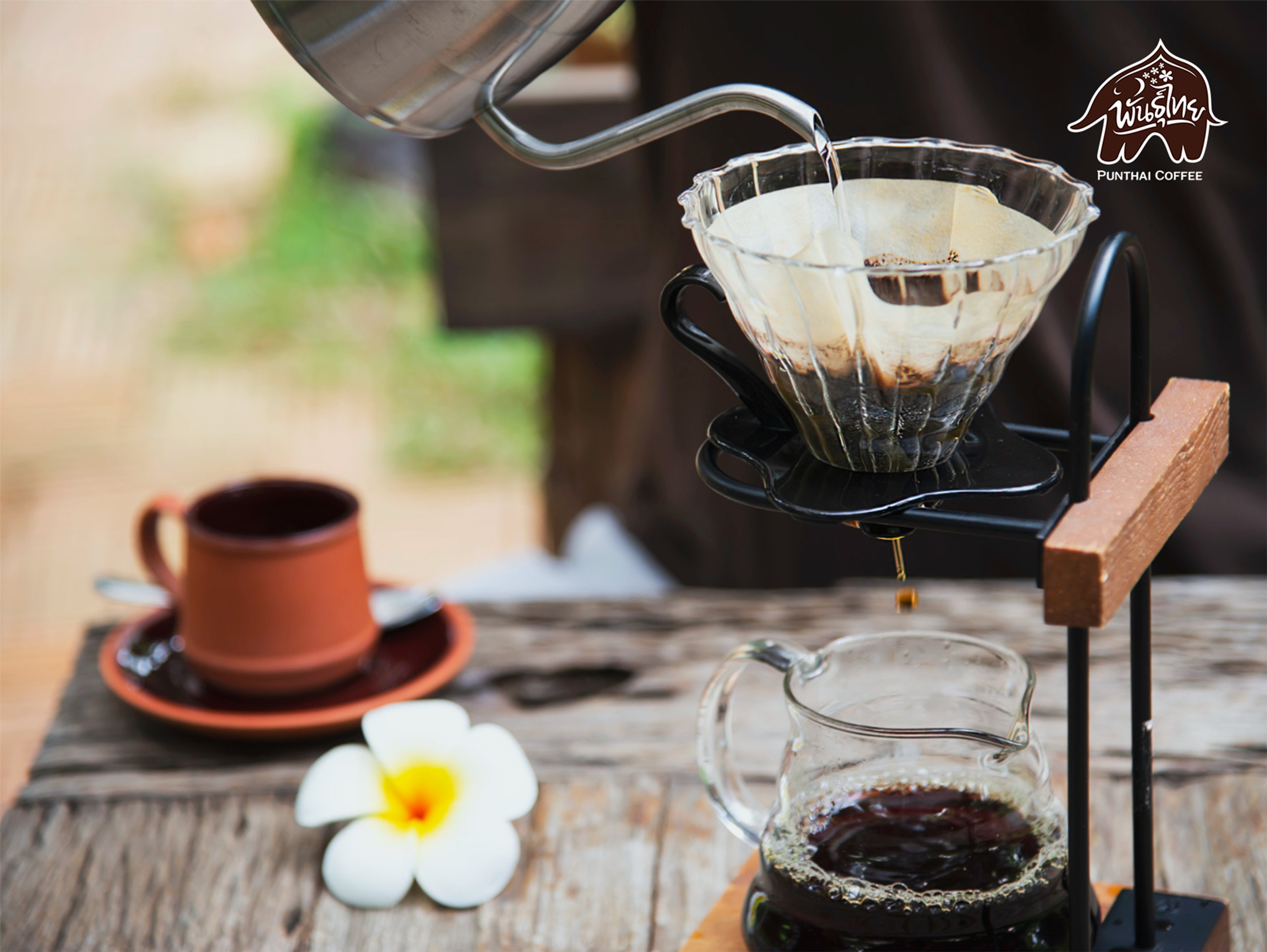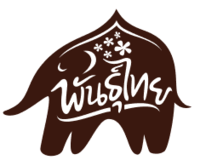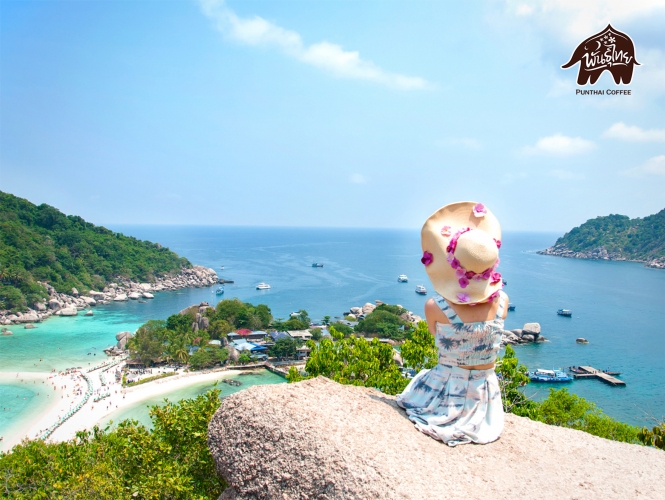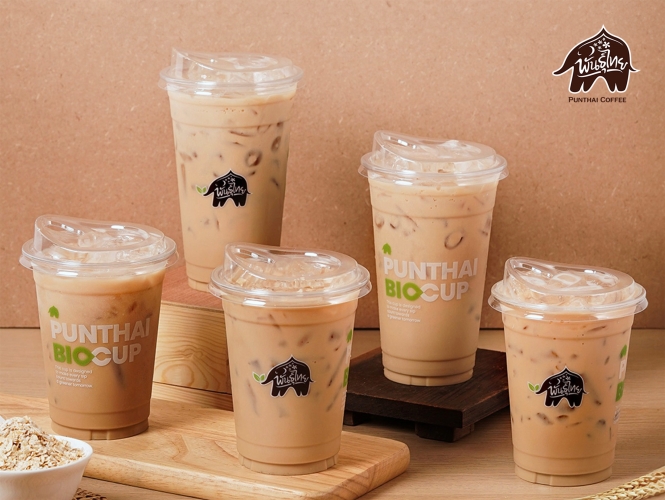
How to Drip Coffee Like a Pro: A Beginner's Guide to Brewing the Perfect Cup
For coffee lovers, everyone is familiar with "coffee dripping", as it is a popular slow-life method of brewing coffee. It requires more patience and attention to detail compared to regular coffee brewing methods. Today, PunThai will show you the art of coffee dripping, how to drip coffee starting from the necessary equipment, the detailed drip coffee brewing method, all the way to expert tips to make your coffee taste like it was brewed by a professional barista.
What Is Coffee Dripping?
Coffee dripping is a method of brewing coffee by slowly passing hot water through the coffee grounds and a filter. It requires meticulous attention and care in each step, making it suitable for people who don't like to rush, but rather savor the coffee slowly, appreciating the aroma and flavors in detail.
Drip coffee is one of the charms that attracts coffee lovers who prefer the pure essence of coffee, without much modification. They prioritize the natural aroma and authentic flavors of the coffee beans above all else.
Drip coffee brewing allows you to fully experience the true characteristics of each coffee variety, as there is an immense diversity of coffee from various growing regions around the world. Each origin has its own distinctive flavors and aromas. If you enjoy a fruity, acidic coffee, you can opt for Ethiopian Arabica. If you prefer a nutty, chocolatey profile, Brazilian Arabica might be your choice. These unique flavor and aroma profiles are extracted more clearly through the drip method compared to other brewing methods.
Drip coffee is not just about a strong, bitter taste. It opens up a new experience of coffee drinking, allowing you to savor delicious, refined flavors, similar to sipping premium wine or fruit juice. This makes coffee drinking a pleasurable daily ritual.

Drip Coffee Equipments
1. Coffee Grinder
There are two main types of coffee grinders: manual and electric.
Blade Grinder
A Blade Grinder is a type of coffee grinder that comes in both electric and manual versions. The main advantages of this type are its low price, portability, and easy cleaning.
However, the main downside of a Blade Grinder is the uneven grinding. The blades chop and grind the coffee beans in an unstructured manner, resulting in a mix of fine, coarse, and medium-sized coffee grounds. This inconsistency can affect the aroma and flavor of the coffee, making it taste uneven, either weaker or stronger than desired.
Conical Burr Grinder
The key benefit of a Conical Burr Grinder is its ability to precisely control the fineness of the coffee grounds. It uses two conical burrs, which can be made of ceramic or metal, to grind the beans evenly.
This type of grinder comes in both electric and manual versions, providing versatile options to suit different needs. The crucial factor is the ability to adjust the grind size as desired.
2. Dripper and Coffee Filters
The dripper is the top container, resembling a cup, used to hold the coffee for dripping. There are three main types:
- Chemex: A dripper with a tapered, sharp-edged bottom. The wide opening at the bottom and the 60-degree angle of the conical shape are optimal for extracting the full, authentic flavor of the coffee beans.
- Trapezoid Dripper: This dripper has a trumpet-like conical shape, but the bottom is cut off, leaving only 1-3 small drain holes. These tiny holes control the slow and consistent flow of the hot water through the coffee grounds.
- Cylindrical or Basket-Shaped Dripper: This type has a cylindrical or basket-like shape, with about 3 small drain holes at the bottom to regulate the hot water flow. Unlike the Trapezoid Dripper, it does not have a resting place for the water, allowing for better control over the water flow through the coffee grounds.
3. Paper Filter
There are three main types of paper filters to choose from, depending on the dripper shape:
- Cone-shaped paper filters for conical drippers
- Truncated cone paper filters for Trapezoid (Flat-bottom) drippers
- Flower-shaped (pleated) paper filters for cylindrical or basket-shaped drippers
4. Coffee Server/Carafe
The coffee server or carafe used for drip coffee should have a long, curved, and sharp-edged spout to allow for easy, controlled pouring and flow rate.
5. Scale and Beaker
A scale is used to measure the amount of dripped coffee, ensuring the perfect strength and intensity of the final brew.
6. Drip Server
The drip server is typically a pitcher-shaped vessel, usually made of transparent glass, allowing you to clearly see the color and beauty of the dripping coffee. The glass material also helps maintain the temperature and preserve the aroma and flavor of the coffee.

Selecting and Preparing Coffee Beans
1. Types of Coffee Beans
Choose medium or dark roast coffee beans. Use about 15-18 grams of coffee beans per 240 ml of water. Grind the beans to a moderately fine consistency, but not too fine.
2. Coffee to Water Ratio
Typically, the recommended ratio for drip coffee is 1:15 grams of coffee to water. However, this is not a strict rule, as the ratio can be adjusted to suit your desired taste preferences.
If you want a stronger, more intense coffee, use a lower water ratio. If you prefer a lighter, more delicate taste, increase the water ratio to around 1:17 grams.
Water Temperature
Water temperature is a critical factor to consider. Use a Drip Kettle with a built-in thermometer, or a separate thermometer, to ensure the water temperature is between 92-94°C (198-201°F) before brewing. Water that is too hot can result in an overly strong, bitter coffee flavor.
Pouring and Timing
The way you pour the water and the timing are also important factors.
- Slow water flow means longer extraction time, resulting in a more intense, bitter coffee.
- Fast water flow means shorter extraction time, resulting in a lighter, more acidic coffee. Aim for a steady, even pour, circulating the water around the coffee grounds in the dripper. This helps ensure a balanced, optimal extraction.

3. Detailed Drip Coffee Brewing Method and Drip Coffee Tips
1. Grind 20g of coffee beans to a consistency similar to white granulated sugar.
2. Prepare 240g of hot water, following a 1:12 coffee-to-water ratio.
3. Place a paper filter in the dripper and rinse it with hot water to preheat the equipment.
4. Add the ground coffee into the paper filter.
5. Pour the hot water in 3 rounds, just enough to wet the coffee grounds evenly.
Pre-infusion stage:
- Pour the water onto the center of the coffee grounds, then spiral outwards.
- Slowly increase the pouring speed.
- This stage takes about 30-45 seconds, with minimal flow through the filter.
Middle stage:
- Increase the pouring speed and force to extract the maximum amount of water.
- The coffee in the dripper will be a golden brown color.
- Gradually slow the pouring, as the water starts to flow faster and the coffee becomes more diluted.
- This stage uses about 150 ml of water or until around the 2-minute mark.
Final stage:
- Gently slow down the pouring, dripping the remaining water.
- The coffee color will become lighter and more clear.
- This stage lasts around 2-3 minutes.
- Slowly pour the hot water in a circular motion, starting from the edges and moving inward.
- The entire brewing process should take 2-3 minutes. Once the coffee has finished dripping, you can rinse the remaining grounds with hot water.
Proper Drip Techniques
- Maintain the water temperature between 92-96°C (198-205°F).
- Pouring in a steady, circular motion helps distribute the water evenly.
- The more water you pour in one spot, the more that area will be extracted. So pour evenly.
- Avoid agitating or pressing down the coffee grounds during the drip.
- After the drip is complete, make sure to rinse out any remaining grounds.
Tips and Precautions for Drip Coffee
- Use clean, tasteless, odorless water.
- Adjust the coffee-to-water ratio to suit your personal taste preferences.
- Hotter water extracts more coffee compounds.
- Monitor the time and volume - if it takes too long, the coffee may taste sour.
- Clean the equipment regularly to prevent stale coffee residue affecting the flavor.
- Practice often to develop your technique - the drip method greatly impacts the final taste.
Try PunThai's 4 Drip Coffee Flavors!

PunThai invites all drip coffee lovers to savor the flavors of our 100% Arabica coffees from the Doi Tung Development Project. By simply brewing our drip coffee at home, you can experience the unique taste profiles of Phunthaithai x Doi Tung Arabica coffees. Our starter drip coffee set includes 4 distinct flavors:
1. Dark Wood
This dark roast Arabica drip coffee is full of intriguing flavors - dark chocolate notes with a hint of nutty and brown sugar. It's like taking an evening stroll through a forest.
2. Cedar Forest
A medium roast Arabica with refreshing pine and herbal aromas, yet still retaining chocolate and brown sugar notes. It's akin to walking through a lush, green pine forest.
3. Tropical Fresh
This medium roast Arabica has a juicy, fruit-like sweetness reminiscent of plum and caramel. It adds a refreshing sensation to the coffee drinking experience, like exploring a lush, tropical rainforest.
4. Creamy Hills
A medium to dark roast Arabica with a velvety, dreamy mouthfeel and notes of almond and caramel. For those who love almonds, this coffee offers a light, comforting experience, like wandering through warm, rolling hills.
Now that you know the details of how to drip coffee brewing, why not try making it at home? PunThai offers both roasted coffee beans and ready-to-brew drip coffee sets, so you can enjoy barista-quality drip coffee without even leaving your house. You can order online through the PunThai website or via a delivery app today!
Reference:
- วิธีการดริปกาแฟ (Drip Coffee) ศิลปะบนกาแฟ | Nestle Dolce Gusto
- กาแฟดริป (Drip Coffee) เมนูชูโรง ตามต้นตำหรับคอกาแฟ
- เจาะลึกกาแฟดริป (Drip Coffee) ฉบับเริ่มต้นทำตามได้ step by step!



